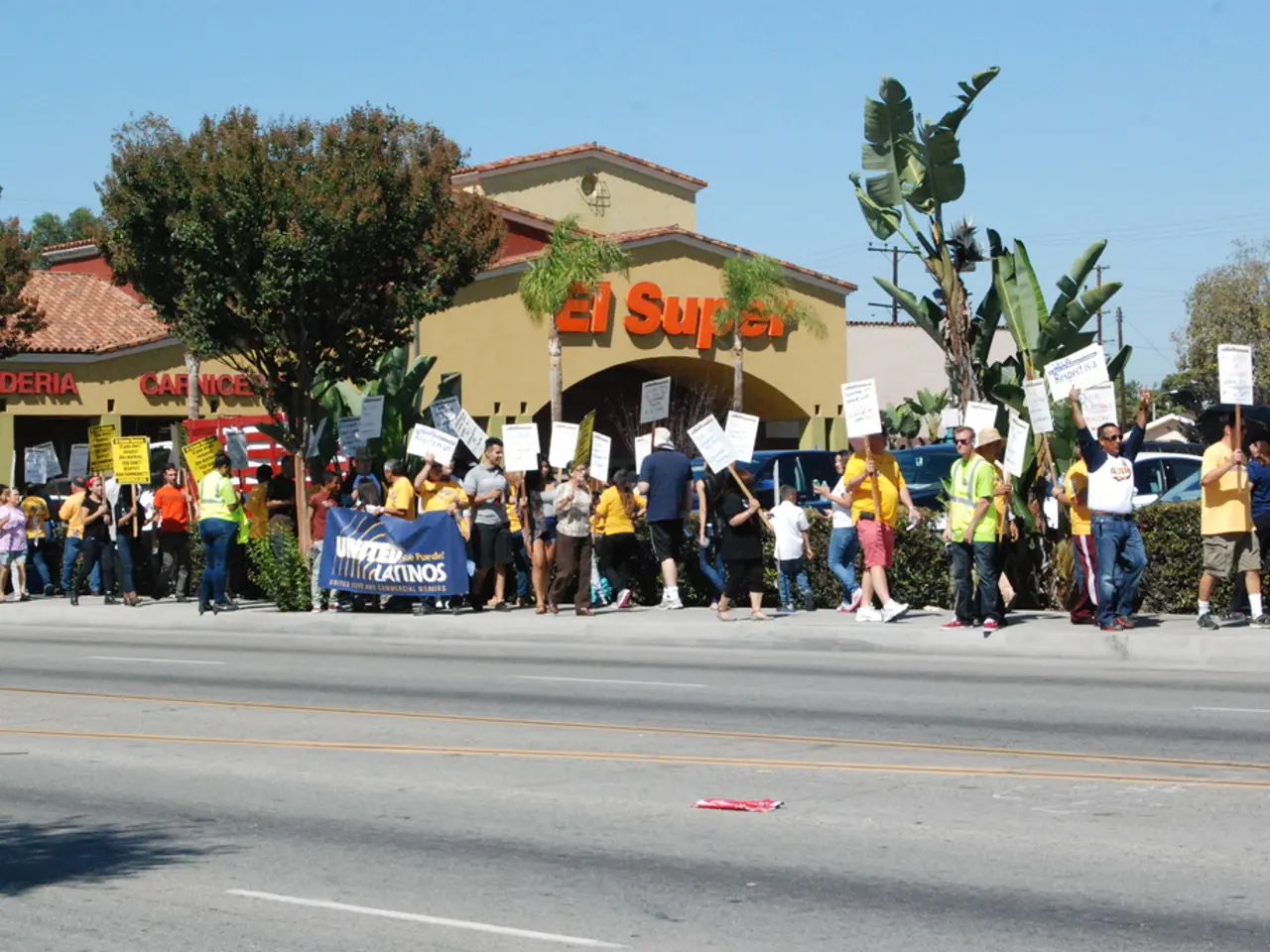Refugee Homes Ravaged, Aid Reduced: Unrelenting Hardships for Returning Syrians
In a significant blow to Syria's vulnerable population, international aid cuts, particularly from the United States and European donors, have jeopardised crucial humanitarian programs. This development has left UN-funded community centres across Syria teetering on the brink of closure, posing a severe threat to the well-being of many Syrian refugees who have returned home.
One such centre, based in Damascus and funded by the United Nations' refugee agency (UNHCR), serves around 100 people daily. The centre offers vital services such as educational support, medical equipment, mental health and counselling sessions, that families cannot get elsewhere in Syria. For instance, the centre has been instrumental in supporting autistic children and providing mental health support, which is crucial for the overall well-being of these individuals and their families.
The cuts will close nearly half of the UNHCR centres in Syria, including around 42% of its 122 community centres. This decision will deprive some 500,000 people of assistance and reduce aid for another 600,000 that benefit from the remaining centres. The livelihood programme that supports small businesses will shrink by 20% unless it finds new funding.
Ayoub Merhi Hariri, who returned to Syria at the end of 2024, was counting on support from the livelihood programme to pay off a debt he owed for setting up a business. However, with the programme's funding cut, he now fears he will have to sell everything to repay his creditors.
Mimas, a member of the community, expressed that the loss of the centre would be enormous, and she would weep if they had to leave. The centre has been a beacon of hope and a sense of belonging for many Syrians, making them feel like they are part of society.
The healthcare system in Syria is facing a potential collapse due to decreased Western aid, as highlighted by recent reports tracking aid cuts and their consequences on essential services in Syria. This situation occurs amid a staggering global shortfall of $25 billion in UN appeals funding in 2024, which has more than doubled the projected funding gap for upcoming years, forcing humanitarian organisations to severely prioritise aid allocation.
Although increased investments from other international actors, such as a $7 billion energy infrastructure deal involving US, Turkish, and Qatari companies, and a €175 million EU pledge for economic recovery, offer some hope, they do not fully compensate for the humanitarian aid shortfalls that sustain basic community services and meet urgent needs.
The UNHCR will only have limited scope to support the return of some of the 6 million Syrians who fled the country since 2011 due to the aid cuts. This development underscores the urgent need for global donors to reconsider their aid commitments and prioritise the needs of some of the world's most vulnerable populations.
This story was published with permission from Thomson Reuters Foundation, the charitable arm of Thomson Reuters, that covers humanitarian news, climate change, resilience, women's rights, trafficking, and property rights. The organisation's work is essential in providing accurate and timely information about critical issues affecting millions of people worldwide.
- The cuts in international aid, particularly from the US and European donors, have put the United Nations' Sustainable Development Goals (SDGs) at risk, as they jeopardize crucial humanitarian programs in Syria, such as those addressing climate change, migration, and war-and-conflicts.
- The closure of nearly half of the United Nations' refugee agency (UNHCR) community centres in Syria, including those offering essential services like education, medical aid, mental health support, and livelihood programs, could lead to a political crisis, as numerous people will be left without these vital resources.
- The loss of UNHCR-funded community centres poses a threat not just to the physical well-being of Syrian refugees but also to their mental well-being, as these centres often provide a sense of belonging and hope in a challenging environment, contributing significantly to the general news narrative on the recovery of Syria and the welfare of its people.






